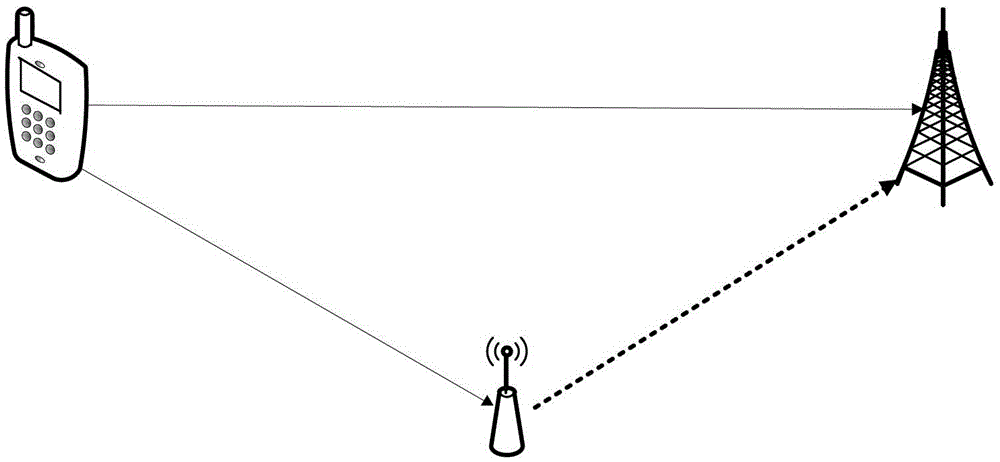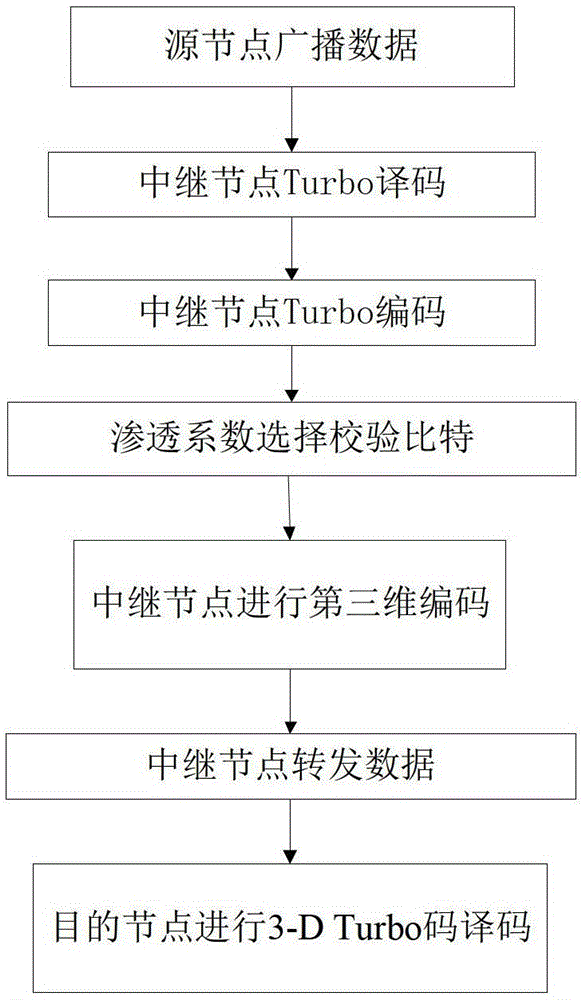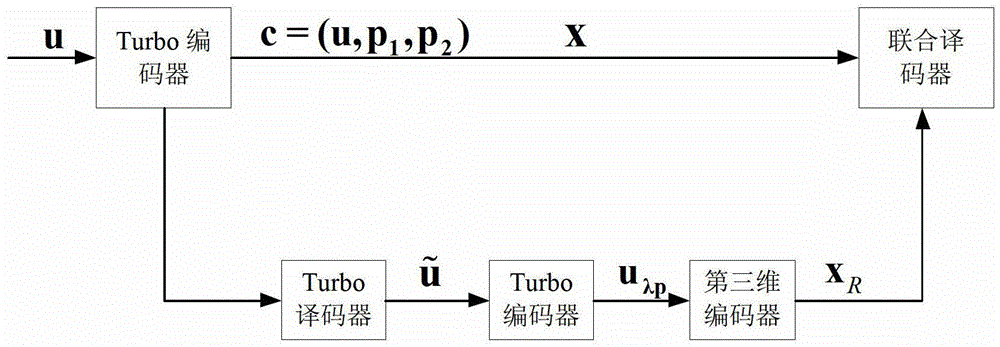Relay Transmission Method Based on Distributed 3-d Turbo Codes
A transmission method and relay node technology, applied in transmission systems, digital transmission systems, radio relay systems, etc., can solve the problem that distributed Turbo codes are difficult to obtain frame error rate performance, and reduce the probability of error propagation and coding. Low gain, the effect of achieving system performance
- Summary
- Abstract
- Description
- Claims
- Application Information
AI Technical Summary
Problems solved by technology
Method used
Image
Examples
Embodiment Construction
[0037] Reference figure 2 with image 3 , The implementation steps of the present invention are as follows:
[0038] Step 1. The source node broadcasts data
[0039] (1.1) The source node S performs Turbo code encoding and modulation on its original data u:
[0040] Reference Figure 4 , The implementation of this step is as follows:
[0041] (1.1a) The source node S performs Turbo code encoding on the original data u (length K), and obtains the code sequence c=(u,p) 1 ,p 2 ) (Length N=3K), where u is the information sequence of the source node S coding sequence c, p 1 (Length is K) is the check sequence of the first component code of the source node S code sequence c, p 2 (Length is K) is the check sequence of the second component code of the source node S coding sequence c; the Turbo coding method used by the source node can be selected from existing methods, see: ShuLin, Daniel J. Costello, Jr ., "Error Control Coding", Machinery Industry Press, 2007;
[0042] (1.1b) The source nod...
PUM
 Login to View More
Login to View More Abstract
Description
Claims
Application Information
 Login to View More
Login to View More - R&D
- Intellectual Property
- Life Sciences
- Materials
- Tech Scout
- Unparalleled Data Quality
- Higher Quality Content
- 60% Fewer Hallucinations
Browse by: Latest US Patents, China's latest patents, Technical Efficacy Thesaurus, Application Domain, Technology Topic, Popular Technical Reports.
© 2025 PatSnap. All rights reserved.Legal|Privacy policy|Modern Slavery Act Transparency Statement|Sitemap|About US| Contact US: help@patsnap.com



